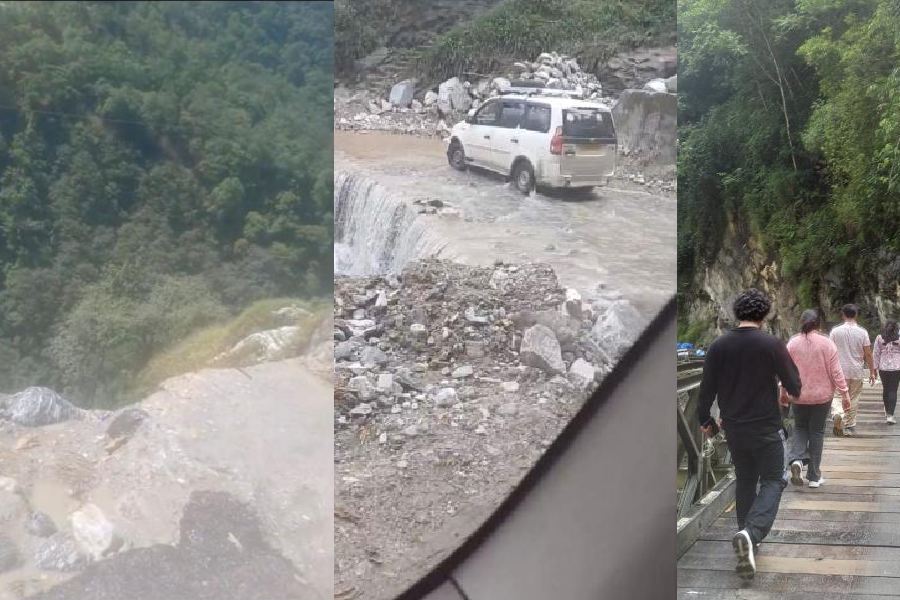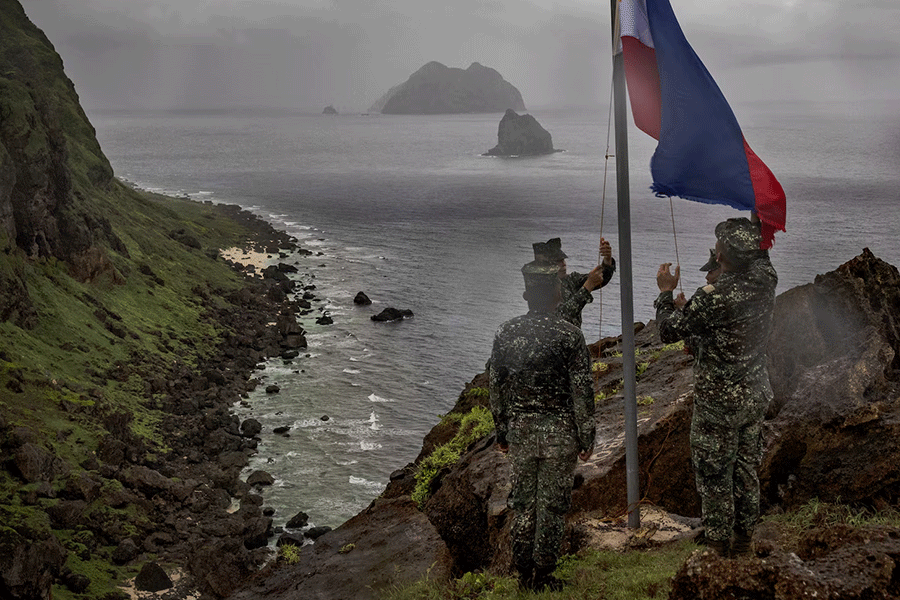The boulders that function as borders along roads had vanished. The width of the road was reduced to half along several stretches.
For a group from Calcutta on holiday in Sikkim, the return journey from Lachung turned into a nightmare.
Three families from Narendrapur and Howrah covered a five-hour distance to Gangtok from Lachung (116km) in almost 11 hours — scared for their lives and hoping a fresh spell of rain would not halt their onward journey.
“It was scary. For large stretches, our car moved on the edge with only a few boulders holding the tyres,” said Terence John, who went with his family and friends.
“This situation continued for close to five hours till we crossed the Phidang Bailey bridge,” he said.
There was uncertainty at every bend.
“Anything could have happened at any time. We were scared that the weather would change and we would be stuck again. It did rain torrentially but we had crossed the Phidang Bailey bridge by then,” said John.
The group of nine reached Gangtok around 6.30pm on June 2 (Monday), almost 11 hours after they had started from Lachung.
They were scheduled to return to Calcutta on Sunday (June 1) but were stuck at Lachung for two days. They reached the city on Tuesday afternoon.
Multiple landslides at Theeng and Chungthang in the Mangan district have stranded hundreds of tourists in Lachung since Saturday.
“The route (Lachung-Gangtok) had just been restored, but it was still slippery. There was a risk of the vehicle skidding. Along the route, close to the areas where there had been landslides, the army and police personnel were guiding the drivers,” said John.
The drivers were being instructed not to switch off the engine or take decisions on their own, said John.
“The army and police personnel were there with medical units. They were constantly giving directions to the drivers, monitoring the movement of the vehicles and asking them to stay calm. We sat on tenterhooks and with our fingers crossed,” he said.
The tourists had to get down and cross two bridges on foot.
“We were told that the bridge would not be able to take so much load so we had to get down,” said Dolly Mullick, a retired central government employee.
The group was scheduled to come down to Kalimpong from Lachung on May 31. But the landslides and the incessant rain stranded them at Lachung. Any movement was allowed only after clearance from the Sikkim government.
On May 30, the group had gone to Zero Point after returning from Lachen the previous day.
“A small stream at a distance of barely 300 metres from the hotel at Lachung had swelled into a large waterfall the next day. The entire night, we could hear the roar of the water,” Mullick.
The calm of the previous day had gone, and the weather had completely changed on May 31, she said.
“We could see the Teesta flowing from the windows of our room, and it was pure joy. The next day we saw the same river in its fury,” said Mullick.
Mullick recalled that another group had started for Gangtok on May 31 morning, but they returned traumatised and scared.
“They had children with them and they came back traumatised, having faced a near-death experience, they told us,” said Mullick.
On June 1, the tourists were instructed to start.
“Even while we were loading our bags in the car, a fresh instruction came that we could not start and had to wait for further orders. One more day went. It was only when the weather cleared on June 2 that we started,” said Mullick.











